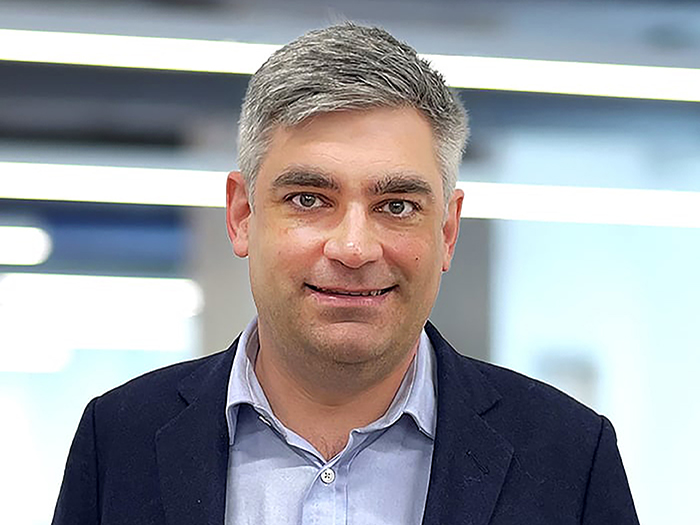How Asking 10 Questions Can Help Unearth Psychosocial Risk Factors in Workers’ Comp

A recent webinar delved into the biopsychosocial treatment model and return to work, with special emphasis on identifying the presence of psychosocial risk factors in poor outcomes.
Presenters Anne Marciniak, with MedRisk, and Katie McBee, with Phoenix Physical Therapy, walked attendees through the mechanisms of pain and the basics of the biopsychosocial model, honing in on issues raised notably by Dr. William Osler, who died in 1918 but is still regularly quoted in presentations.
As Marciniak put it, “You may have heard ‘treat the patient not the disease’ before, and some of these things might seem new today, but this concept has been around for over a century, and we’re still struggling.”
As adjusters and nurses consider “working against the clock,” to prevent chronic pain cases from becoming permanently disabled cases, Marciniak and McBee offer a distinct approach.
The Orebro-OMPQ Tool
In particular, they advocate for the Orebro-OMPQ tool, which can assess multiple psychosocial risk factors associated with the development of chronic pain. Through the use of a 10-question questionnaire, the tool can help providers understand the level of distress a patient is experiencing due to pain, and reassess if changes in the treatment plan are not resulting in positive changes in outcomes.
Though McBee cautioned that the tool is not the only thing that will determine high risk cases, it will help adjusters and nurses catch most of them.
“One of the ways we look at them in the clinic is that if they’re high but they stay in that high risk group that’s when we have a problem,” said McBee. “If they’re high risk initially because they had some traumatic injury, it’s probably a normal reaction to whatever they’re going through and it’ll self-resolve as their condition improves.”
As helpful as Orebro can be, one of psychosocial risk factors that it does not measure, although an eleventh question that addresses it can be added to the questionnaire, is perceived injustice—a slippery concept that Marciniak said in a post-webinar interview, can be a significant barrier.
The Impact of Perceived Injustice
Perceived injustice operationally is “an appraisal cognition comprising elements of the exaggerated severity of loss due to injury or pain, perceived irreparability of loss, and a sense of unfairness and blame,” as defined by Scott and Sullivan in a 2012 study, among other researchers.
Specifically as it relates to workers’ comp, Marciniak knows it’s a common occurrence. “Perceived injustice can occur when individuals suffer an injury or loss that they consider undeserved or unfair,” she explained.
“Many on-the-job injuries can easily fall into this category. Injured workers often experience anger over the injury and may blame their company, work environment, or specific company staff.” She noted further that perceived injustice can amplify the negative emotional impact of the injury and resultant pain experience.
“Significant correlations have been found in research between depressive symptoms, fear of movement, pain catastrophizing, and perceived injustice. More research is needed into the specific process in which perceived injustice impacts pain and recovery.”
“However, this concept may explain in part why surgical outcomes for non-workers’ compensation patients are typically better than for workers’ compensation patients,” she added.
Optimism on the Horizon
Aside from this one aspect of psychosocial factors to watch, the presenters argue that the broader health care system in the U.S. is due for a reset on the holistic approach that workers’ comp has been preaching for some time, with successes and failures inherent in that effort.
“The U.S. health system is still extremely focused on a biomedical approach to injuries and rehabilitation,” Marciniak said.
“The focus is on finding a specific physical structure responsible for [a] pain/issue and fixing it. Chronic injuries and chronic pain conditions respond much more effectively to the biopsychosocial model of care in which a specific structural origin of the symptoms may not be present or be able to be fixed.”
“Many times, the U.S. work comp system tries to minimize psychosocial aspects of pain or injury such as anxiety, depression, fear, and anger, seeing these more as psychological conditions that fall outside the work comp realm. This separation of mind from body can impede progress,” she affirmed.
Indeed, a BMJ study published all the way back in 2004 made the still-controversial point that illness is not secondary to disease, and that “revision is needed to explain illnesses without disease and improve organization of health care.” While more recent scholarly articles cite four decades of research into the minefield of a purely biomedical approach within the American fee-for-service health care model.
For her part, Marciniak believes there is hope on the horizon. “Every year, more studies are completed that provide evidence of effective biopsychosocial treatment techniques like cognitive behavioral therapy, motivational interviewing, mindfulness, stress reduction, and functional training. Many employers and insurance companies are already piloting programs for holistic approaches to injured workers.”
As we work to thoughtfully and consciously bridge the gap across the tentacles of health care services and specialties, Marciniak urges adjusters especially to take control with a tactic that, she says, cannot be overstated in terms of importance: open communication with the injured worker.
“There has been significant research finding that a collaborative care model in which the treatment team forms a ‘therapeutic alliance’ with the patient or injured worker is one of the most effective ways to mitigate psychosocial risk factors,” Marciniak explained.
“Adjusters can be a part of this collaborative care team and often have the opportunity to provide the injured worker’s first impression of the claim, treatment, and return-to-work process.”











